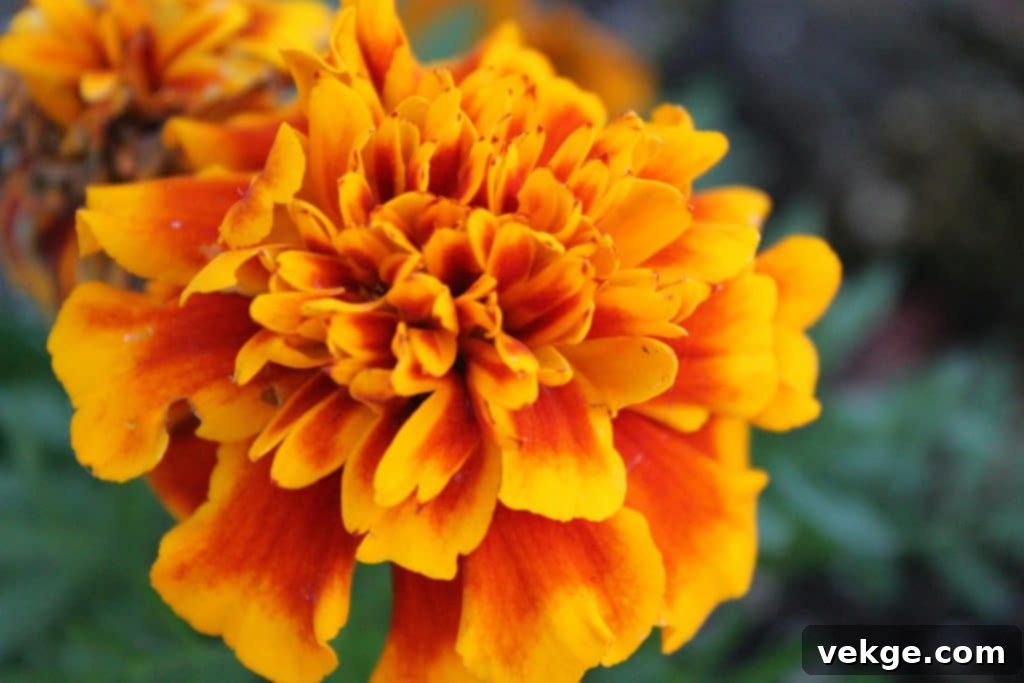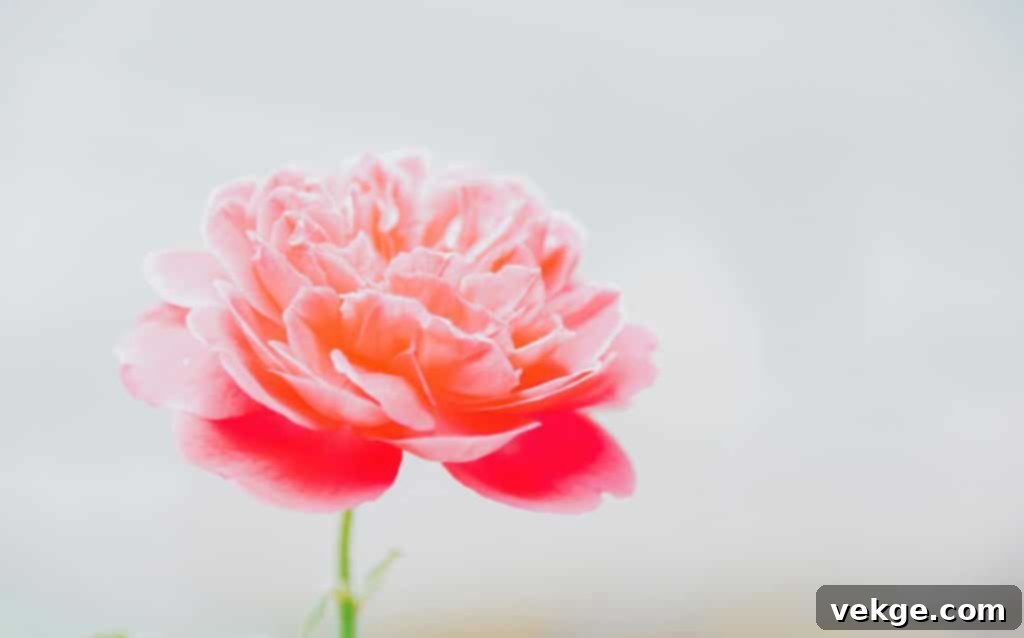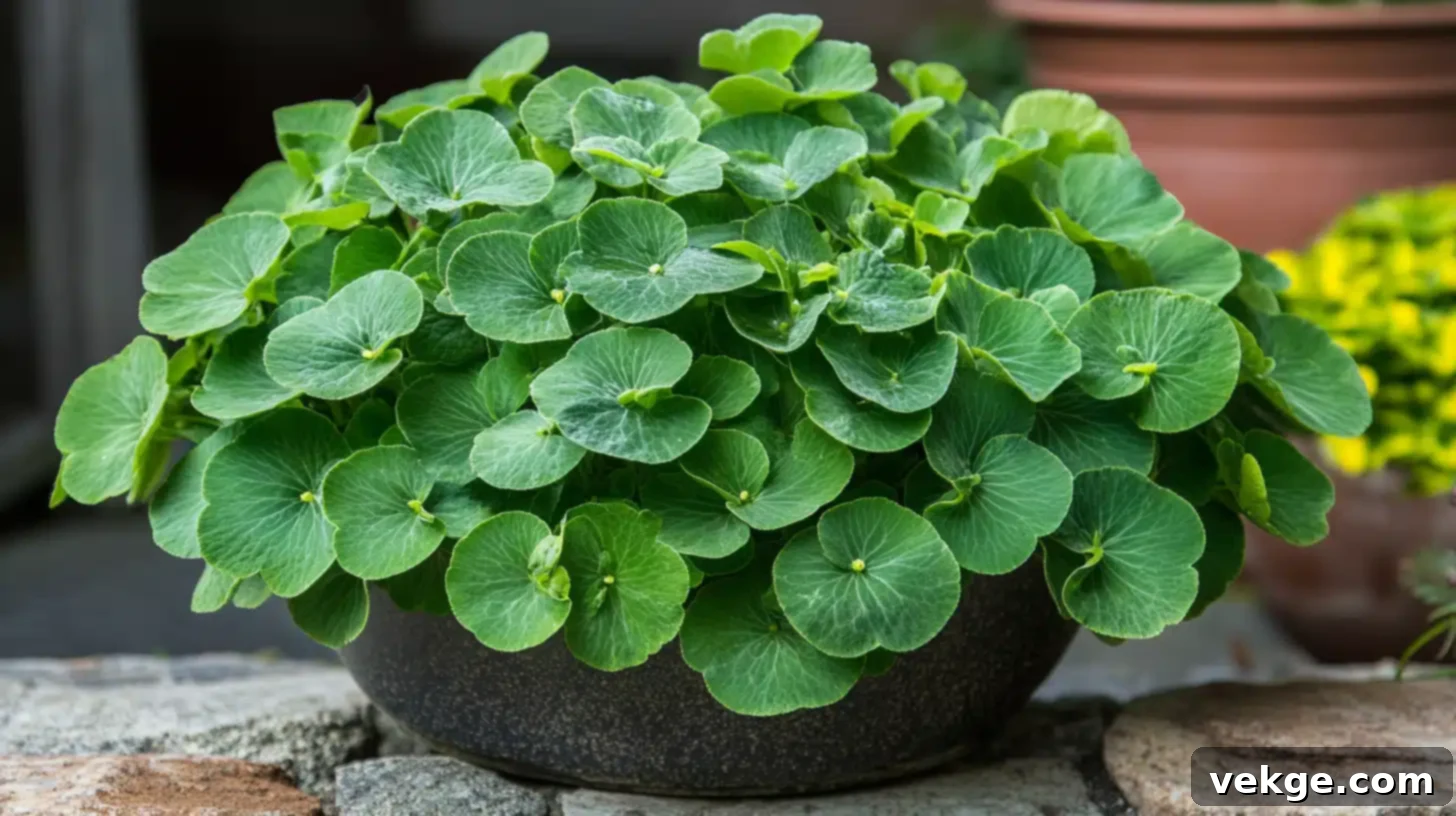Cultivating Good Fortune: The Ultimate Guide to Lucky Plants for Your Garden
Gardens are far more than just spaces filled with vibrant colors and beautiful foliage; they are reflections of culture, history, and deeply held beliefs. From ancient civilizations to contemporary homes, flowers and plants have been intricately woven into human lives, often carrying profound symbolism and meaning that transcends mere aesthetics. Beyond their visual appeal, countless species are revered for their reputed ability to attract good fortune, prosperity, and spiritual protection into our lives. Whether you possess a seasoned green thumb or are just embarking on your horticultural journey, incorporating plants believed to bring luck can transform your garden into a sanctuary of positive energy and serendipitous charm. This comprehensive guide invites you to delve into the fascinating world of auspicious botanicals, revealing their unique stories, rich cultural significance, and practical care tips to ensure they flourish under your care and infuse your outdoor, or even indoor, spaces with an extra bit of serendipity.
The Royal Flush: A Succulent Symbol of Winning Fortunes
In the high-stakes world of card games, particularly poker, the term “Royal Flush” represents the absolute pinnacle of success. It is the ultimate, unbeatable hand—a perfect sequence of ten, jack, queen, king, and ace of the same suit—signifying a rare and extraordinary triumph. This powerful association with unparalleled luck and undeniable victory has naturally extended to its botanical namesake, the Pleiospilos nelii, commonly known as the Royal Flush succulent. Embracing the potent connotations of its poker counterpart, this unique plant is cherished not only for its distinctive beauty but also for its symbolic promise of good fortune and a winning streak in life.
Unveiling the Royal Flush Succulent: Appearance and Origin
The Royal Flush succulent is a truly captivating hybrid within the Pleiospilos genus, often affectionately referred to as ‘Split Rock’ or ‘Living Stone’ plants. These monikers stem from their remarkable ability to mimic the pebbles and rocks found in their native arid environments of South Africa, a clever camouflage strategy to deter herbivores. This specific cultivar, ‘Royal Flush’, stands out with its exceptional coloring and intricate patterning. It is a stemless plant, typically presenting an almost perfectly spherical or ovoid shape, which adds to its enigmatic charm. The plant usually features two to four robust, fleshy leaves, distinguished by their rich burgundy hue. These striking leaves are further adorned with dark, almost iridescent dots scattered across their surface, creating a visually compelling texture. A characteristic deep fissure or “split” in the center of the plant is where new leaves and flowers emerge, often revealing a captivating purplish nub that enhances its exotic, otherworldly appeal.
Cultivating Your Lucky Succulent: Care and Flowering Secrets
Despite its exotic appearance and unusual form, the Royal Flush succulent is surprisingly manageable for gardeners who understand its very specific needs. It’s a plant that thrives on a philosophy of ‘less is more,’ preferring neglect to over-attentiveness. The most critical aspect of its care is ensuring it has open, exceptionally well-draining compost. A gritty, sandy mix, perhaps with added pumice or perlite, is ideal to closely mimic its natural desert habitat. This succulent excels in rock gardens, terrariums, or as a striking potted specimen, provided it receives ample sunlight. Direct sun for several hours a day is crucial for maintaining its vibrant coloration and encouraging robust, healthy growth. Adequate light also helps prevent the plant from becoming etiolated (stretched and pale).
Watering is arguably the most vital and often misunderstood aspect of succulent care. Royal Flush succulents are highly drought-tolerant and extremely prone to rot if overwatered. The golden rule is to water sparingly, only when the soil has been completely dry for an extended period – typically several weeks. During its dormant periods, which usually coincide with extreme summer heat and winter cold, watering should be reduced even further or stopped entirely. When you do water, do so thoroughly, allowing excess water to drain away completely, and never let the plant sit in standing water.
One of the most rewarding moments for any Royal Flush succulent enthusiast is witnessing its bloom. In early spring or autumn, depending on environmental conditions and the plant’s maturity, this resilient succulent unfurls a surprisingly large and exquisite flower. These blossoms, often a delicate blend of pink and white, are impressive in proportion to the plant’s modest size. What truly sets them apart, however, is their enchanting fragrance, which is remarkably reminiscent of sweet coconut. This tropical aroma, emanating from a plant perfectly designed for arid landscapes, adds another layer of intrigue and delight, firmly cementing its mystique as a truly special, and undeniably lucky, botanical treasure.
Marigolds: Golden Blooms of Prosperity and Protection

Few flowers are as universally recognized and celebrated for their vibrant beauty and profound symbolism as marigolds. These cheerful, sun-kissed blossoms, with their rich hues of gold, orange, and yellow, have captivated the imaginations of diverse cultures across the globe for centuries. Their meanings are as varied as their numerous petals, yet a consistent thread of good luck, abundant prosperity, and spiritual protection runs through their rich tapestry of interpretations. From ancient rituals to modern garden beds, marigolds have long been held in high esteem as bringers of positive energy.
Cultural Significance and Ancient Lore
In India, marigolds are not just flowers; they are an integral part of life’s most auspicious occasions and sacred ceremonies. Their bright, optimistic colors symbolize the sun, vitality, and the triumph of light over darkness, making them a powerful emblem of positivity. They are lavishly used in garlands to adorn deities, as vibrant decorations for major festivals like Diwali (the festival of lights), and as essential adornments for weddings, signifying success, prosperity, and new beginnings. Many believe their distinctive, pungent scent also acts as a potent ward against negative spirits and energies, making them indispensable for creating a sacred and protected atmosphere. Similarly, in China, the marigold’s golden, sun-like appearance earns it the moniker ‘flower of a thousand years,’ representing longevity, wealth, and abundant good fortune. It is a common sight during Lunar New Year celebrations, strategically placed to usher in a prosperous and auspicious year for families.
Historically, the ancient Romans cultivated marigolds extensively, valuing them for both their ornamental beauty and their perceived medicinal properties. They often linked these golden blooms to concepts of love, passion, and beauty. In Christianity, marigolds are affectionately referred to as “Mary’s Gold,” symbolizing devotion, humility, and remembrance of the Virgin Mary. This rich and expansive cross-cultural heritage solidifies the marigold’s status as a powerful emblem of good luck, making it a cherished and meaningful addition to any garden or home. Their enduring symbolism makes them more than just a pretty flower; they are a living testament to centuries of hope and good wishes.
Cultivating Abundance: Growing and Caring for Marigolds
Marigolds are incredibly resilient and remarkably easy to grow, making them a perennial favorite for both novice and experienced gardeners seeking to invite good fortune into their spaces. They thrive best when planted in locations that receive full, direct sunlight for at least six hours a day, as this abundant light exposure promotes prolific flowering and keeps the plants compact and bushy. Well-draining soil is crucial for marigolds; while they are adaptable to various soil types, waterlogged conditions can quickly lead to root rot and fungal diseases. After initial planting, especially for seedlings, it’s important to keep the soil consistently moist until the plants are well-established and show significant new growth, indicating a strong root system.
Once established, marigolds become remarkably drought-tolerant, only requiring watering when the top few inches of soil feel completely dry to the touch. Overwatering is a common mistake that should be avoided. Regular deadheading – the process of removing spent or faded blooms – is absolutely vital for encouraging continuous flowering throughout the growing season, significantly prolonging their vibrant display from late spring until the first frost. Beyond their aesthetic appeal, marigolds also serve as excellent companion plants in the garden. Their roots release compounds that naturally deter common garden pests such as nematodes, while their strong scent helps to ward off aphids, whiteflies, and other undesirable insects, thus protecting neighboring vegetables and flowers organically. By integrating these vibrant marigolds into your garden, you not only enhance its visual appeal with a cascade of golden hues but also harness centuries of cultural belief in their power to bring good luck, safeguard your horticultural endeavors, and contribute to a healthier ecosystem.
Peonies: The Luxurious Bloom of Honor, Prosperity, and Love

Among the most exquisite and sought-after flowers in the horticultural world, peonies stand as undisputed queens. Their lush, opulent blooms, often as large and impressive as a dinner plate, exude an unmistakable air of timeless elegance and romantic grandeur. It’s no surprise that peonies are an overwhelmingly popular choice for wedding ceremonies and luxurious bouquets, gracing everything from minimalist modern arrangements to vibrant, traditional displays. Beyond their undeniable visual appeal and intoxicating, often sweet fragrance, peonies are deeply steeped in symbolism, particularly renowned for their ability to bring good luck, abundant prosperity, honor, and a happy, enduring marriage to those who cultivate them.
A Symbol of Love, Honor, and Wealth Across Cultures
Originating in Asia, particularly China, where they have been revered for millennia, peonies symbolize honor, wealth, and aristocracy. In Chinese culture, they are affectionately known as the “King of Flowers” and embody royalty, prosperity, and great success, often depicted in classical art, ceramics, and textiles to signify good fortune and high social status. Their strong association with love, happiness, and beauty makes them an essential floral element in celebrations and homes, believed to attract positive energy and ensure a flourishing, joyful life. For weddings, their profound symbolism of a blissful union, good fortune, and a long-lasting, prosperous marriage makes them a perfect fit, adding not just unparalleled beauty but profound meaning to the special day. The sheer abundance and luxurious fullness of their petals also suggests overflowing wealth and generosity, cementing their status as powerful conduits of good luck and positive energy.
Understanding Peony Varieties and Their Characteristics
Peonies primarily come in two main types, each with its unique charm and growth habit: herbaceous and tree peonies. Herbaceous peonies, which are the most common type found in home gardens, are characterized by their soft, green stems that die back to the ground each winter, only to re-emerge with vigorous growth in the spring. These varieties typically burst into bloom in late spring through early summer, usually around May and June, producing large, incredibly fragrant flowers in a dazzling spectrum of colors, ranging from pure white and delicate pinks to deep reds, rich burgundies, and vibrant purples. Their robust nature means they can live for many decades, even centuries, often becoming cherished heirlooms passed down through generations in a garden.
Tree peonies, on the other hand, develop woody stems that remain above ground year-round, resembling small, elegant deciduous shrubs. While their blooms are equally magnificent, often larger and more exotic with ruffled petals, they tend to flower slightly earlier than their herbaceous counterparts, extending the peony season. Tree peonies are highly celebrated for their striking architectural presence in the garden and their ability to tolerate more dappled shade than herbaceous varieties, offering greater versatility in garden design. Both types require careful consideration due to their initial cost, which often reflects their significant size, maturity, and the sheer, breathtaking beauty of their blooms, making proper care essential for their impressive longevity and continued display.
Cultivating Magnificence: Essential Peony Care for Decades of Blooms
Proper planting time is absolutely crucial for the successful establishment and abundant flowering of peonies. Herbaceous peonies are best planted in early spring or, ideally, in the autumn, allowing them sufficient time to establish a robust root system before the stress of the next growing season. They prefer a neutral to slightly alkaline soil pH, enriched with plenty of organic matter, and absolutely require full sunlight—at least six hours a day—to truly flourish and produce their coveted, show-stopping blooms. Tree peonies are a bit more adaptable to various well-drained soil types but also benefit from good drainage and prefer a location with morning sun and some afternoon shade, especially in hotter climates, to protect their delicate blooms from scorching.
For herbaceous peonies, proper planting depth is paramount; their “eyes” (small reddish growth buds) should be no more than 1 to 2 inches below the soil surface. Planting too deeply is one of the most common reasons why peonies fail to bloom. Adequate watering is important during dry spells, particularly in their first year after planting and when flower buds are forming, but it is critical to always avoid waterlogging, which can lead to root rot. Due to the immense size and weight of their magnificent blooms, many peony varieties, especially those with very large flowers, benefit significantly from staking or supportive rings to prevent their stems from bending or breaking, particularly after heavy rain or strong winds. With a little initial care and patience, these magnificent plants will reward you with decades of breathtaking beauty and the enduring promise of good fortune, making them a truly invaluable and cherished asset to any garden.
Embracing Botanical Blessings in Your Garden
As we’ve explored, the world of plants offers far more than just visual delight and a pleasing aesthetic. Many species, deeply woven into the rich fabric of human culture and belief across continents and centuries, carry ancient traditions of bringing good fortune, abundant prosperity, and spiritual protection. From the rare, poker-inspired allure of the Royal Flush succulent, with its unique form and winning symbolism, to the vibrant, culturally rich marigolds, celebrated for their golden glow and protective essence, and the luxurious, romantic peonies, revered for their opulence and association with love and honor—each plant offers a unique story and a special kind of blessing for your home and garden.
Whether your personal preference leans towards the understated elegance and intriguing uniqueness of a special succulent, the extravagant spectacle and intoxicating fragrance of a full-blown peony, or the cheerful, protective embrace of a bed of marigolds, there truly are lucky plants to suit every taste, every garden style, and every climate. Integrating these botanical treasures into your landscape not only profoundly enhances its beauty and contributes to ecological well-being but also invites a deeper connection to nature’s inherent magic and the positive energies they are believed to manifest. So, embrace the opportunity to cultivate more than just plants; cultivate good fortune, joy, and a deeper sense of well-being in your own green sanctuary, allowing these ancient symbols of luck to flourish and inspire.
